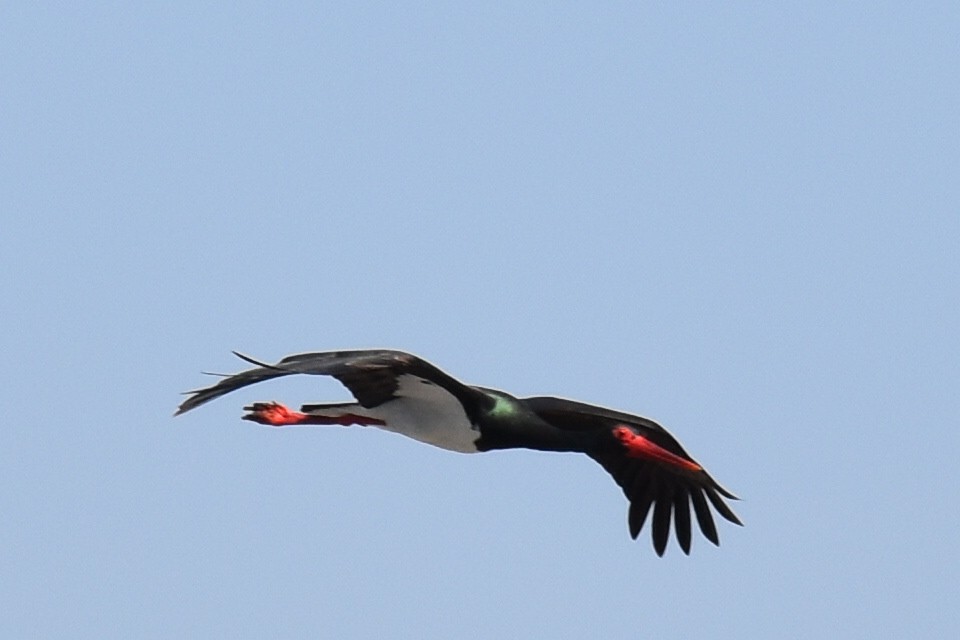 Where does black Stork live?
Where does black Stork live?
Where does black Stork live?
During the summer, the black stork is found from Eastern Asia (Siberia and northern China) west to Central Europe, reaching Estonia in the north, Poland, Lower Saxony and Bavaria in Germany, the Czech Republic, Hungary, Italy and Greece in the south, with an outlying population in the central-southwest region of the Iberian Peninsula (Extremadura and surrounding provinces of Spain, plus Portugal). It is migratory, wintering in tropical Africa and Asia, although certain populations of black storks are sedentary or dispersive. An isolated population exists in Southern Africa, where the species is more numerous in the east, in eastern South Africa and Mozambique, and is also found in Zimbabwe, Swaziland, Botswana and less commonly Namibia. Most of the black storks that summer in Europe migrate to Africa, with those from western Germany and points west heading south via the Iberian Peninsula and the rest via Turkey and the Levant. Those flying via Spain spend winter in the Falémé River basin of eastern Senegal, Guinea, southern Mauritania, Ivory Coast, Sierra Leone and western and central Mali, while those flying via the Sinai end up in northern Ethiopia, the Kotto River basin in the Central African Republic, the Mbokou river basin in Chad and northeastern Nigeria. Black storks summering in western Asia migrate to northern and northeastern India, ranging mainly from Punjab south to Karnataka, and Africa. They are occasional visitors to Sri Lanka. Those summering further east in eastern Russia and China winter mainly in southern China, and occasionally in Hong Kong, Myanmar, northern Thailand, and Laos. They were first recorded in western Myanmar in 1998. The black stork prefers more wooded areas than the better-known white stork, and breeds in large marshy wetlands with interspersed coniferous or broadleaved woodlands, but also inhabits hills and mountains with sufficient networks of creeks. It usually inhabits ponds, rivers, edges of lakes, estuaries and other freshwater wetlands. The black stork does inhabit more agricultural areas in the Caspian lowlands, but even here it avoids close contact with people. Its wintering habitat in India comprises reservoirs or rivers with nearby scrub or forest, which provide trees that black storks can roost in at night. In southern Africa it is found in shallow water in rivers or lakes, or swamps, but is occasionally encountered on dry land. After disappearing from Belgium before the onset of the 20th century, it has returned to breed in the Belgian Ardennes, Luxembourg and Burgundy, France, by 2000. It appears to be increasing in numbers in Spain and Portugal, where the population was estimated at 405 to 483 pairs in 2006. The black stork is a rare vagrant to the British Isles, turning up in the warmer months—particularly in spring—generally in the south and east. Sightings have become more common since the 1970s as its breeding range moves northwards. It has been recorded in Scotland six times between 1946 and 1983, including from Shetland, Orkney and the Highlands, as well as the Scottish Borders (Peebles). It is not abundant in the western parts of its distribution, but more densely inhabits eastern Transcaucasia. Further east, it has been recorded from locations across Iran, though little is known about its habits there; breeding has been recorded from near Aliabad in Fars province, Khabr National Park in Kerman province, Karun river in Khuzestan province, Qaranqu River in East Azarbaijan province, and Aliabad river in Razavi Khorasan province. The population has declined in Iran due to draining of wetlands. East of the Ural Mountains, the black stork is patchily found in forested and mountainous areas up to 60°‒63° N across Siberia to the Pacific Ocean. South of Siberia, it breeds in Xinjiang, northwestern China, northern Mongolia south to the Altai Mountains, and northeastern China south to the vicinity of Beijing. In the Korean Peninsula, the black stork is an uncommon summer visitor, no longer breeding in the south since 1966. Birds have been seen in the northeast but it is not known whether they breed there. Similarly it has been seen in the summer in Afghanistan, but its breeding status is uncertain.
